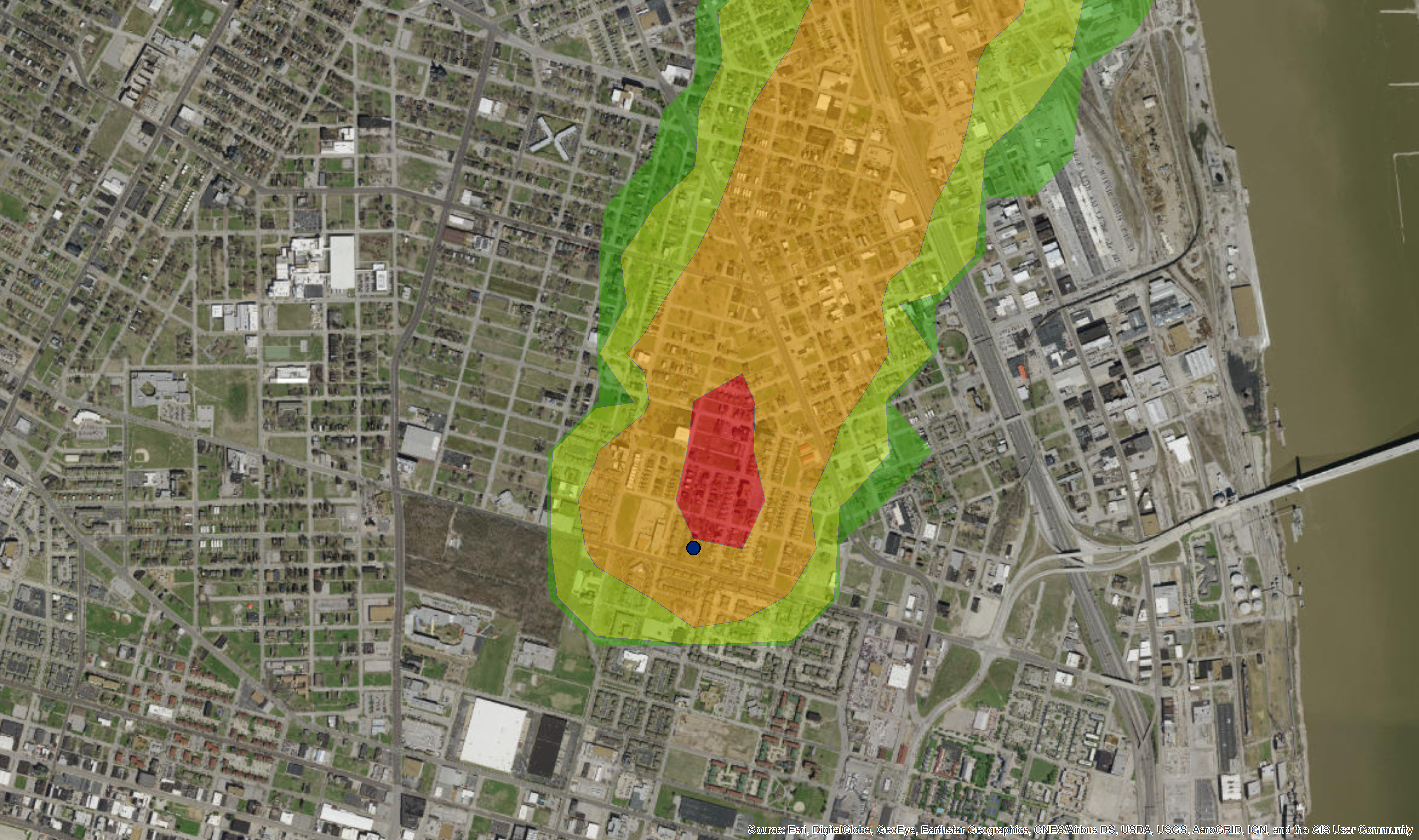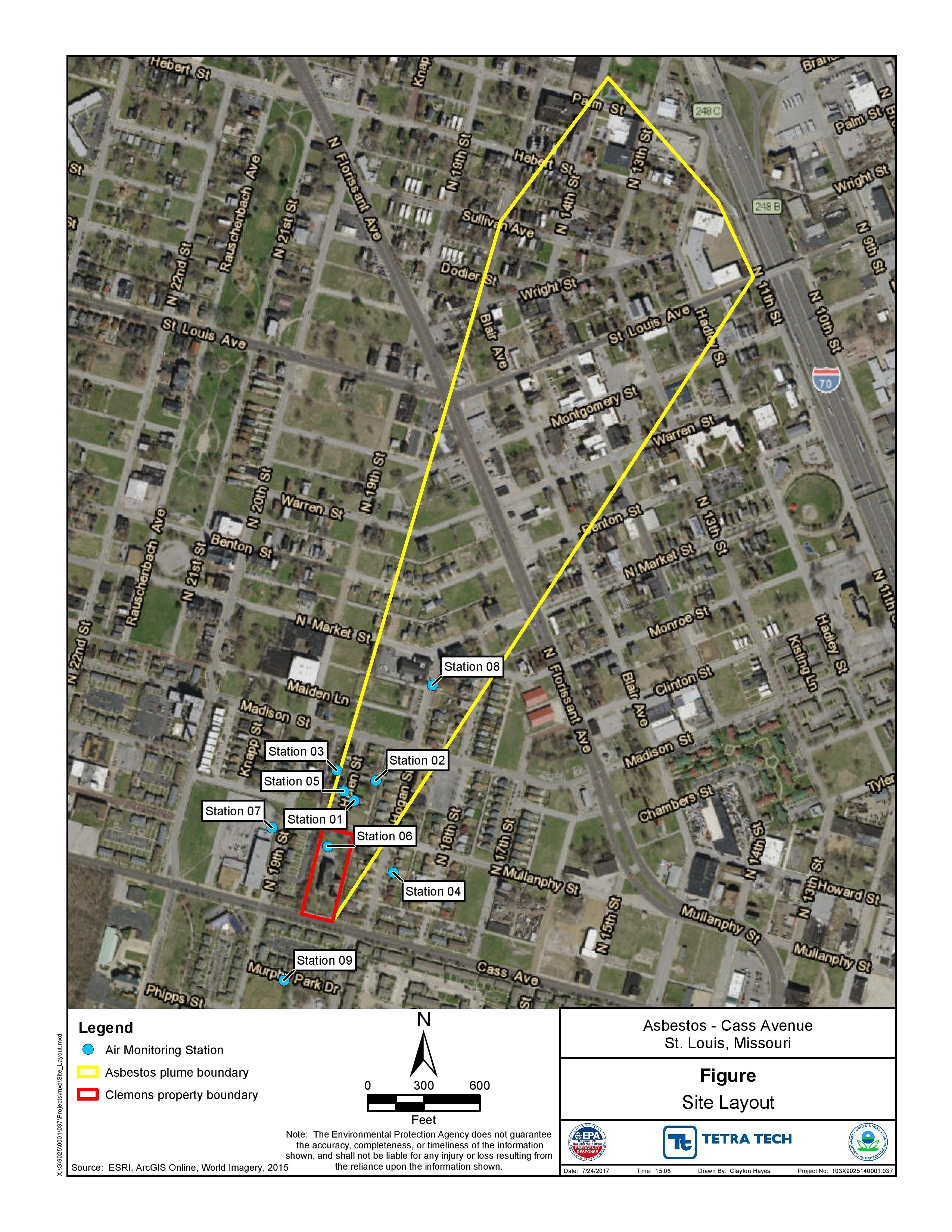City of St. Louis Department of Health works with EPA Regarding 1849 Cass Avenue Fire
Environmental Protection Agency assisting with tests for asbestos.
General Statement
The public is advised to avoid direct or indirect contact with the asbestos-containing material which may look like ash or paper which crumbles to dust upon contact.
If you live or work near the Clemens Mansion fire location, do not touch, do no try to pick up, move or vacuum any debris that may have come from the fire. The debris will look like ash or paper, and crumbles to dust easily. This dust may contain asbestos.
EPA Region 7 staff will oversee a licensed asbestos abatement contractor to remove waste materials potentially related to asbestos from the fire and adjacent properties and any related asbestos debris found in neighborhoods near the site.
This Frequently Asked Questions document is also available in a printable format.
Cass Avenue - Clemens Mansion Fire Site informational packet available here.
Air Monitoring After The Clemens House Fire - Final Report
I live near the Clemens Mansion and have debris on my property. Is my family safe?
The health risks of asbestos are almost entirely from inhaling asbestos fibers in the air. Any asbestos in debris that has fallen to the ground and is not airborne poses very little risk.
However, if you live or work near the Clemens Mansion, do not touch, do not try to pick up, move or vacuum any debris with the asbestos-containing material.
The debris will look like ash or paper, and crumbles to ash easily. This dust may contain asbestos.
EPA Testing Results
If you want more information regarding asbestos, please use the following resources:
Should I mow my lawn?
You are advised not to mow your lawn until health officials have conducted further testing in the area and developed a plan for removal of the debris.
What if I mowed my lawn already or used a leaf blower to clean debris off my lawn? Am I in danger?
The health risk from airborne asbestos fibers is dependent upon the quantity of asbestos, the duration of exposure, and the number of times you have been exposed. Those activities are unlikely to pose significant health risks because of the short duration of potential exposure to asbestos.
Should I water my lawn?
You may water your lawn. Watering your lawn may prevent the release of existing asbestos fibers from becoming airborne.
Should my children play outside in the yard?
There is little health risk to children who play outside in the yard so long as they do not disturb the debris. Infants and toddlers frequently put their hands in their mouths, so direct contact with the debris should be avoided. After playing outside, children should take off their shoes outside and wash their hands and face upon entering the house.
Should my pets play outside in the yard?
There is little risk for pets to play outside in the yard so long as they do not disturb the debris. Owners should wash pets' feet upon entering the house to ensure no fire debris is tracked into the home.
Should I dust and/or vacuum inside my house?
You should remove dust from the interior surfaces of your home with a damp cloth before vacuuming. It is advisable to dispose of the cloths you use in a sealed bag. After the interior surfaces have been cleaned, you can vacuum as usual, taking care to empty your vacuum outside.
Sweeping, vacuuming, or otherwise disturbing the debris might increase the release of asbestos fibers. Try not to track the dust and debris into your home – take shoes off when you come inside, wipe pet’s feet when they come in from the outside, and wash children’s hands often.
My car's air conditioning blew out smoke into my car when I started it after the fire. Did that put me in danger? Are there any steps I should take with my car?
Because the duration of potential exposure to any compounds in the smoke was extremely short, the health risks are very low. You should remove any dust from the interior surfaces of your car with a damp cloth. It is advisable to dispose of the used cloths in a sealed bag.
Should I clean up the debris on my own?
Although little health risk is posed if you were to pick up debris and place it in sealed refuse bags, you are advised to wait until health officials have conducted further testing in the area and have developed a plan for removal of the debris.
Are there any special dangers or concerns for infants, children, or the elderly?
There is no special danger for infants, children, and the elderly, except that young children may be likely to play with debris and break it apart, which makes it more likely to be exposed to airborne asbestos fibers. Small children should be monitored to ensure they do not disturb the debris.
If I shouldn't pick it up? Who should? When will the debris be picked up?
Health officials are continuing to conduct tests to assess the health risks in the neighborhood. They are also working on a plan for removal of the debris. We are hopeful that a removal plan will be announced soon.
Why is EPA involved in a structure fire case?
The City of St. Louis and the Missouri Department of Natural Resources asked for our assist to assess the neighborhood and human health situation due to limited resources.
What do I do to keep debris or asbestos fibers out of my home?
Try not to track the dust and debris into your home – take shoes off when you come inside, wipe pet's feet when they come in from outside, and wash children's hands often.
Why are your placing air monitors in the neighborhood? Should I be concerned?
The air monitors are designed to detect levels of asbestos in the air. While we don’t believe there is a significant health risk, we wanted to monitor the air to alleviate any concerns regarding asbestos fibers in the air.
How far did debris from the fire spread throughout the neighborhood?
We are working with the City of St. Louis and Missouri DNR to plot where the debris might have spread based on the wind and weather conditions after the fire started. Once we have that plume mapped, we will continue our visual inspection of properties with debris. This will inform us on the cleanup zone.
How do I let someone know that there is debris near my home?
If you find any of this debris, please call (314) 657-1492 or email health@stlouis-mo.gov and provide the following information:
• Describe what the debris looks like
• The address where the debris is
• Describe where the debris is on your property
• Your name
• Your phone number
I haven’t seen anyone taking action to clear the debris or even looking at our properties. When will we see action?
EPA and city officials have been setting up air monitors in the neighborhood surrounding the mansion to detect possible asbestos fibers in the air. Officials have also been doing a visual inspection to determine the extent of the impacted area.
What is my risk of getting lung cancer?
The Agency for Toxic Substances and Disease Registry (ATSDR), a division of the Centers for Disease Control and Prevention, as well as U.S. EPA Region 7 has indicated that the type of potential short-term exposure to asbestos related to the fire is unlikely to pose any significant health risks.
When asbestos containing materials break down, asbestos fibers can be released. The fibers are very small and thin and cannot be seen without a microscope. Breathing these fibers can cause asbestos-related disease. They can stick in the lungs, causing asbestosis, lung cancer and mesothelioma when exposed to the fibers over a long period of time.
The risk of lung cancer and mesothelioma increases with the number of fibers inhaled. The risk of lung cancer from inhaling asbestos fibers is greater for people who smoke. People who get asbestosis have usually been exposed to high levels of asbestos for a long time, although that is not always the case.
I have had a sore throat and breathing problem since the fire, does that mean I have breathed asbestos fibers? Should I see a doctor?
If you feel like you should see a doctor, please do. The symptoms you have described most likely are caused by smoke inhalation. Exposure to asbestos usually do not cause immediate symptoms.
What happens if it rains? Or the weather changes?
The rain lowers the risk of debris becoming airborne. As the weather improves and conditions become drier, the risk of the asbestos debris becoming airborne may increase. Wetting down your debris will actually diminish the asbestos risks.
What if I have already cleaned up the debris?
We would advise that you wipe down anything you used to clean it up and put any residue that might have been present into a sealed plastic bag.
My bedding and clothes smell like smoke. Does that mean I have asbestos contamination in my house? How do I get rid of the smell/asbestos in cloth?
No, the smell of smoke is not an indication that there is asbestos contamination in your house. We advise that you wash any clothes that smell like smoke.
Clemens Fire Plume Model: This model predicts smoke movement during the fire from around 3:30 am to 5:30 am on 7/12/2017. Colors indicate the concentration of particulate deposition around the fire from the smoke movement.

Below is a map showing the outline of the debris area and air monitoring stations placed by the Environmental Protection Agency. Test results will be posted here as they are received.

Contact Information
Address:
1520 Market Street
, Room 4051
St. Louis, Missouri 63103
Help Us Improve This Page
Did you notice an error? Is there information that you expected to find on this page, but didn't? Let us know below, and we'll work on it.
Feedback is anonymous.